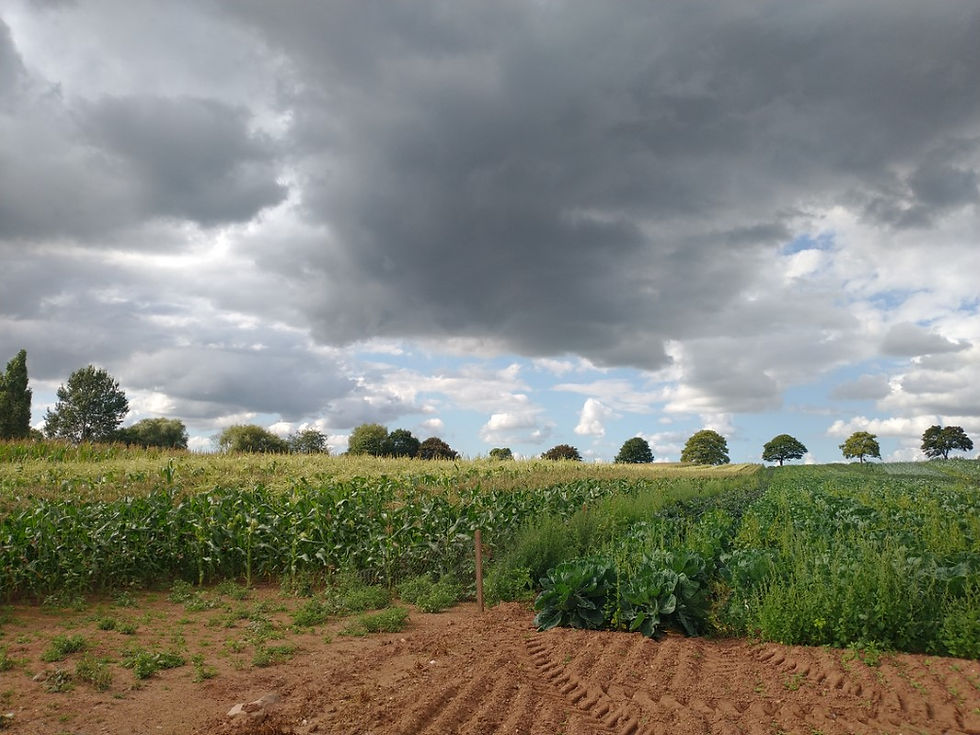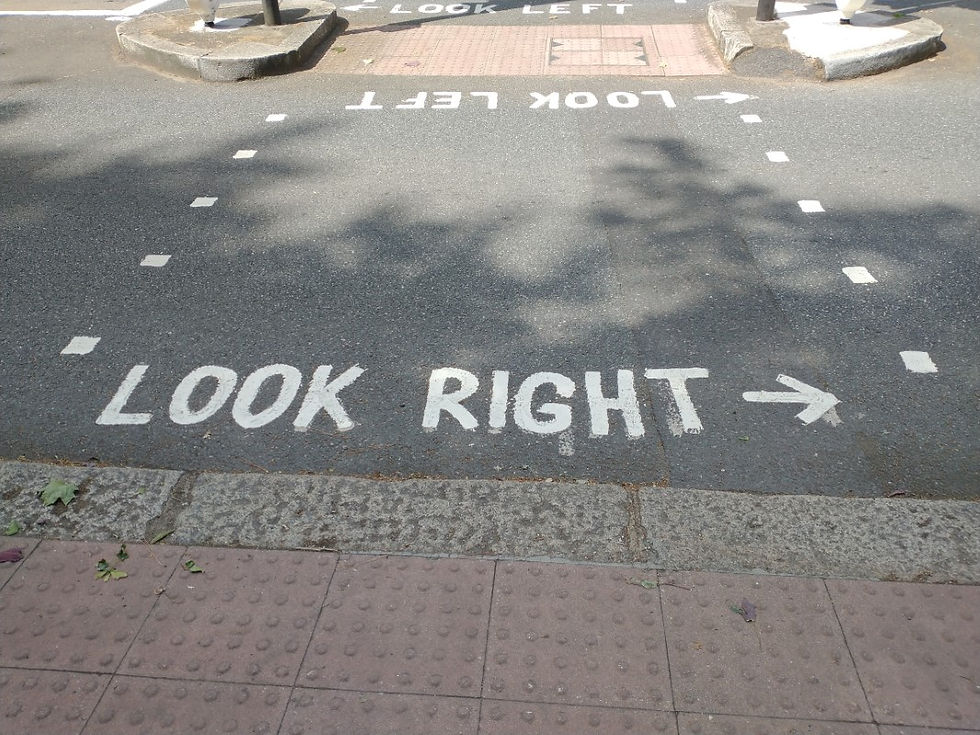French Country Life vs. English Country Life — Part 2
- Lori Cronwell
- Jan 28, 2024
- 6 min read
Updated: Feb 15, 2024
I’ve had a fascination with Great Britain most of my life. In my early to mid-thirties, I traveled several times to the United Kingdom for business and pleasure. After 30 years, I was anxious to return to England last summer to see how rural life had changed and how it compared to my life in rural Brittany, France. This is part two of my comparison. Here’s a link to part one if you haven’t read it yet. Let me preface this post again by saying these comparisons are my own views based solely on my somewhat limited observations as well as some recent statistics.

The cost and quality of eating out
The one thing I hoped had improved in the UK after 30 years was the food, particularly in the rural areas. I remember the hearty breakfasts at the B&B of blood sausage and greasy eggs. Then pub lunch choices of ham and eggs, spam and eggs or fish and chips. Although those are still popular dishes, I did find a more expanded menu this time. One pub offered tasty vegan and Asian fusion fare. The traditional Sunday roasts of lamb, beef or chicken at the local pub were quite delicious. Accompanied by seasonal vegetables, cauliflower cheese, roast potatoes, Yorkshire pudding and gravy, they provided a hearty meal at a reasonable price between 12 and 13 pounds ($15.24 to $16.51).
Generally I found the prices at restaurants to run around 20 pounds (25.40) for a two-item Sunday special. For dinner it was around 22 pounds ($27.90) for two courses and 33 pounds ($41.91) for three courses. Prices include all taxes, but not the 10 percent service fee automatically added in. Overall, I found the cost a bit on the high side considering I was in a small, non-touristy, market town in South Gloucestershire.
While along the coast in Exmouth in the southwest UK county of Devon, I was anxious to indulge in fresh, local seafood. The tourist office directed me to the less expensive of two seafood restaurants overlooking the beaches of the English Channel. For lunch, I had my pick of 15 different types of seafood caught that morning. I chose the second least expensive one, which came with only a green salad. For one additional pound, I upgraded to a small Caesar salad. The total bill was the equivalent of 38 dollars including the 10 percent service fee. The fish and salad were wonderful, but I was hungry an hour later.
In France, a three-course lunch at a Michelin star restaurant near my home in Brittany runs between 26 and 35 Euros ($ 28.29 and $38.08), tip included. You don’t have to spend anywhere near that much to enjoy traditional French food. Lunch at the restaurant in the next village over offers a salad bar, a main course of meat, vegetables and potatoes, followed by a baguette and cheese plate plus a fancy dessert, all for 14 Euros ($15.23). And that price also includes a bottle of wine.
Population density
The English countryside is more densely populated than the French countryside. Statistics confirm this. As of June 3, 2021, the UK had a population density of over 275 inhabitants per /km² compared to 119/km² in France. France is the second most rural country in Europe after Poland. So if you’re looking for a place to live far from the madding crowd, France offers more options. Yet in both countries you can experience country life living in a village or on the edge of a village if you don’t want to be too isolated.
Property prices
I have a habit of reading the real estate postings in the windows of estate agencies wherever I travel. I love houses and I’m always curious about the prices. In late 2022, I purchased my two houses of 875 and 450 square feet. They sit on 16,000 square feet of land on the edge of a village. For what I paid for those two houses I could probably buy a small, terraced house (like a townhouse in the US) with a tiny yard in a UK village. Rental prices are also lower in France than the UK by 20 percent according to Life in Rural France.
Real estate prices fluctuate greatly depending on the property location and condition, so it’s difficult to make direct comparisons. However, a 2022 report shows the price per square meter of existing housing in France at 3,489 Euros compared to 3,898 Euros for the UK. Of course, this includes major cities like London and Paris, but even between those two major cities, not only is real estate and rents in London more expensive, but for 2024, Expatistan estimates the cost of living in Paris to be 30 percent less than London.
Smoking
In Exeter, one of the major cities in the UK county of Devon, and in many of the surrounding villages, I was pleased to see that many restaurants prohibit smoking, not only inside, but also on their outside dining area. I have not seen this type of ban in any village, town or city in France. It’s something I wish the French would embrace. Smoking is not allowed inside restaurants, bars and businesses in France. But there is nothing to prevent someone from smoking right next to you when you’re trying to enjoy your al fresco meal. And I have never seen a smoker in France remotely concerned about their fellow patrons.
According to World Population Review, the UK is one of the leading countries in Europe when it comes to not smoking, with people in France almost twice as likely to smoke as those in Britain. Their 2022 statistic shows 35% of the French smoke, while only 19 percent of the British smoke.

Respect for pedestrians
I found the small towns and villages in the UK to be surprisingly pedestrian UN-friendly. Don’t expect cars to stop for you unless you are at a marked crosswalk, which are few and far between — as are sidewalks. On several occasions I’d be walking along a busy street and suddenly the sidewalk stops and there's no crosswalk and I have two options. One, take my chances dashing across the street in front of a blind curve with no ability to see oncoming cars, or two, reverse direction and walk back several blocks to where there is a crosswalk. Even stepping off the curb at the intersection of a residential street was dangerous as a car zipping around the curb wouldn't even slow down. Plus, you have to stay constantly aware that cars are driving on the left side, instead of the right, and remember to look to the right — and to the left.
Even in a laidback beach community like Exmouth, a driver couldn’t be bothered to stop for a pedestrian at a crosswalk. My hip was hurting so I wasn’t walking as fast as usual, causing this grumpy puppy to slow down for a couple of seconds as he came around the corner blasting his horn and yelling at me to wake up. Perhaps he needed to wake up and become a human being.
Even the smallest of rural villages in France have several crosswalks. There are also barriers and speed bumps to slow traffic coming into a village. I’ve never had a problem crossing the street in France. And I’ve certainly never been yelled at for taking too long.
Overall energy
I definitely felt a different energy from people in the English countryside verses the French countryside. Although people in rural France don’t smile a lot, they generally have a happy, relaxed expression on their faces. In the UK, I saw more tension in people's faces. I came away with the same feeling I had 30 years ago after visiting the UK — that day-to-day life is not easy for the British. This might be due in part to the higher cost of living, a denser population, and less access to fresh produce. Again, these are my personal impressions.
---------------------------
While both countries have their pluses and minuses, I can understand why my British friends living in France, left the UK. Many say they would never move back. While I will always cherish certain aspects of British life and culture — the ritual of tea served in delicate floral teacups, the rolling green hills dotted with sheep, and a really good pint — I know I chose the right country to live in part time.


